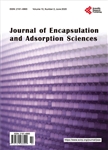<i>In Vitro</i>Studies of NIPAAM-MAA-VP Copolymer-Coated Magnetic Nanoparticles for Controlled Anticancer Drug Release
<i>In Vitro</i>Studies of NIPAAM-MAA-VP Copolymer-Coated Magnetic Nanoparticles for Controlled Anticancer Drug Release*作者机构:Department of Medical Nanotechnology Faculty of Advanced Medical Science Tabriz University of Medical Sciences Tabriz Iran Department of Medical Nanotechnology Faculty of Advanced Medical Science Tabriz University of Medical Sciences Tabriz Iran Drug Applied Research Center Tabriz University of Medical Sciences Tabriz Iran Department of Medical Physics and Biomedical Engineering Shahid Beheshti University of Medical Sciences Tehran Iran Department of Medicinal Chemistry Faculty of Pharmacy Drug Applied Research Center Tabriz University of Medical Sciences Tabriz Iran Department of Science Ahar Branch Islamic Azad University Ahar Iran Faculty of Medicine Tabriz University of Medical Sciences Tabriz Iran
出 版 物:《Journal of Encapsulation and Adsorption Sciences》 (封装与吸附期刊(英文))
年 卷 期:2013年第3卷第4期
页 面:108-115页
主 题:Magnetic Nanoparticles Thermosensitive Copolymer Doxorubicin P(NIPAAM-MAA-VP) Copolymer
摘 要:Thermosensetive poly(N-isopropylacrylamide)-based magnetic nanoparticles were synthesized by free radical polymerization of N-isopropylacrylamide (NIPPAMs), methacrylic acid (MAA), and vinyl pyrrolidone (VP) in the presence of methylene-bis-acrylamide as cross linking agent. The Fe3O4 magnetic nanoparticls were prepared by chemical precipitation of Fe salts in the ratio of 1:2 under alkaline and inert condition. Thermosensitive crosslinked P (NI-PAAM-MAA-VP) copolymers were characterized by FT-IR and H-NMR. The pH and thermosensitive copolymer was used for preparation of drug loaded magnetic nanoparticles, and doxorubicin (DOX) was used as a typical anticancer drug. The amount of the loaded drug and drug release amount were determined by UV measurements. Scanning electron microscopy (SEM) and lower critical solution temperature (LCST) were used to determine the particle surface morphology and the phase transition temperature of the nanoparticles respectively. The release behavior of DOX at pH = 7.4 and 37°C was studied. The result indicated that this thermosensetive magnetic nanoparticle has a high drug loading capacity and favorable linear release property for DOX without initial burst release. Thus this system is promising for the application in targeted smart anticancer drug delivery.



